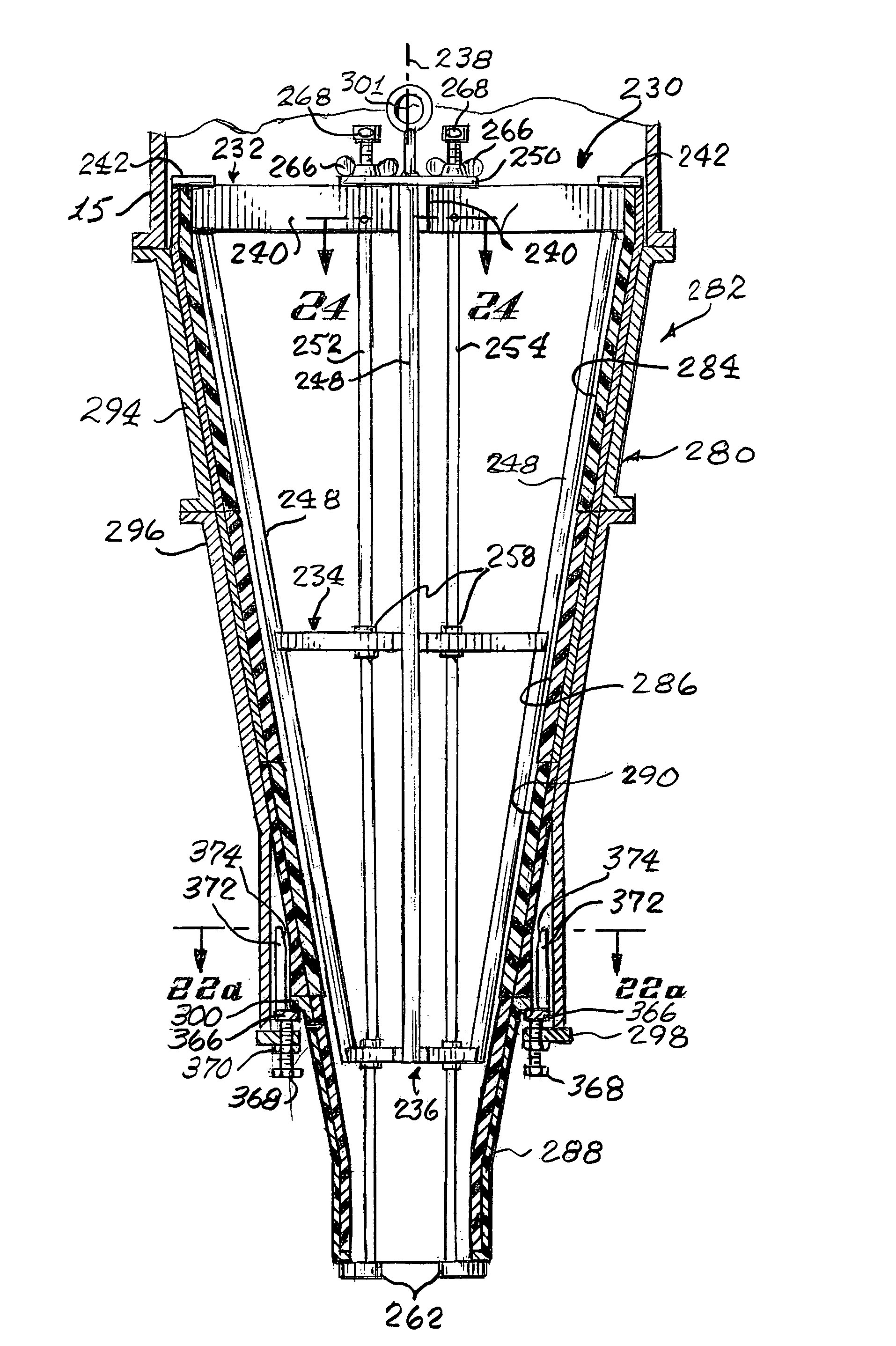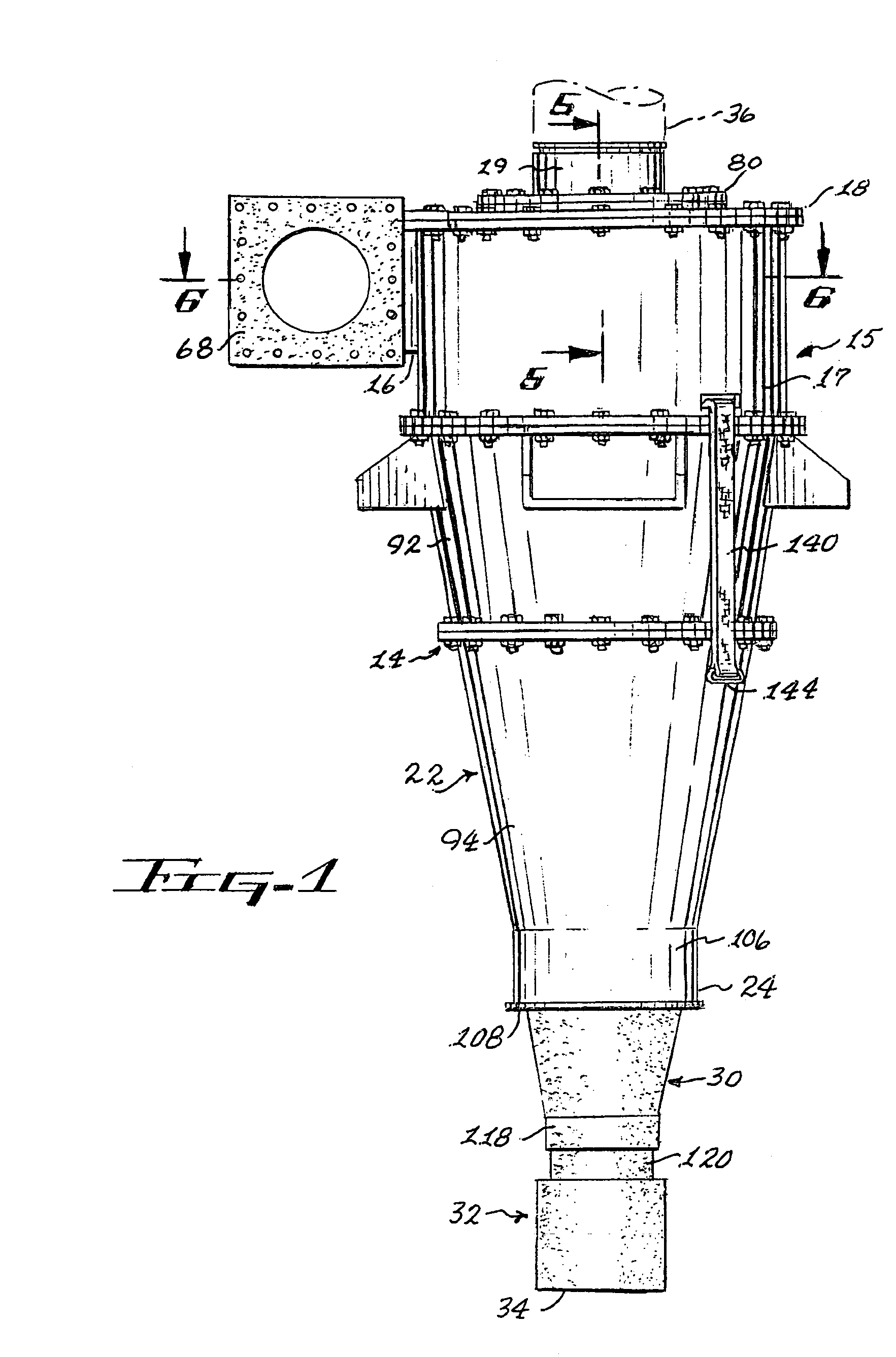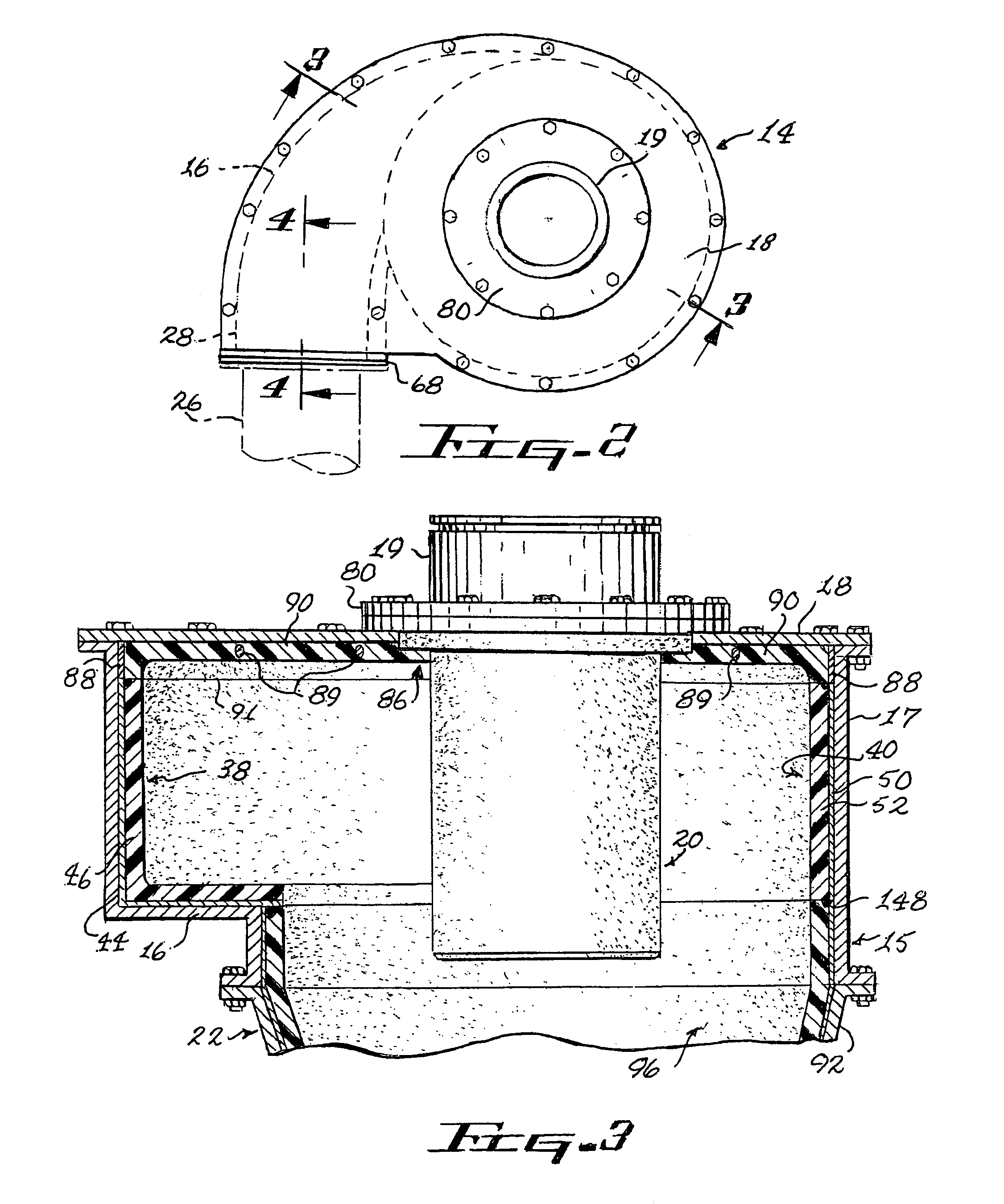Cyclone with in-situ replaceable liner mechanisms and methods for accomplishing same
a liner mechanism and cyclone technology, applied in the field of cyclones, can solve the problems of rusting nuts and bolts, high labor intensity and time-consuming, and large cyclones for the purpose of replacing worn liners,
- Summary
- Abstract
- Description
- Claims
- Application Information
AI Technical Summary
Benefits of technology
Problems solved by technology
Method used
Image
Examples
first embodiment
[0065]The lower cone housing 94 is especially configured to include the means for extracting and replacing the cone liners contained in the conical housing when they become worn. The lower cone housing 94 is of downwardly tapering conical configuration for most of its axial length and deviates from conventional conical cyclone housings by being formed with a cylindrical lower portion 106. An annular ring-shaped shelf 108 extends inwardly into the opening at lower end of the cylindrical portion 106 of the lower cone housing 94 and a lifting ring 110 is supported on the upper surface of the shelf 108. The function and structural details of the lifting ring 110 will hereinafter be described in detail. The apex cone 30 has a rigid substrate 112 formed of a suitable material such as rigid urethane with a bonded liner 114 which is preferably formed of ceramic to better withstand the severe abrasive forces that occur within the apex cone 30. An annular flange 116 is formed on the substrate...
second embodiment
[0086]Once the cone liners have been extracted in the manner described above, the hoist assembly 230 upon which the liners are carried can be moved to a convenient work station for liner inspection and replacement as needed. The preferred method for accomplishing the inspection and replacement operations will now be described with reference being made to FIG. 26. These further steps include laying the hoist assembly 230 and the attached cone liners in the prone position on an especially constructed staging device 304 which will hereinafter be described in detail, followed by the step of removing the hoist assembly from the cone liners. The next step is inspecting the cone liners for wear and replacing those that are worn out to provide a refurbished liner array. When the liner inspecting and replacing steps are completed, the next step is inserting the hoist assembly 230 axially into the refurbished liner array and operating it to exert a clamping action thereon to attach the hoist ...
PUM
| Property | Measurement | Unit |
|---|---|---|
| diameters | aaaaa | aaaaa |
| diameters | aaaaa | aaaaa |
| diameters | aaaaa | aaaaa |
Abstract
Description
Claims
Application Information
 Login to View More
Login to View More - R&D
- Intellectual Property
- Life Sciences
- Materials
- Tech Scout
- Unparalleled Data Quality
- Higher Quality Content
- 60% Fewer Hallucinations
Browse by: Latest US Patents, China's latest patents, Technical Efficacy Thesaurus, Application Domain, Technology Topic, Popular Technical Reports.
© 2025 PatSnap. All rights reserved.Legal|Privacy policy|Modern Slavery Act Transparency Statement|Sitemap|About US| Contact US: help@patsnap.com



